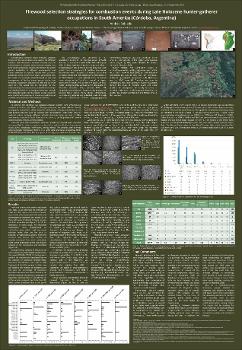Firewood selection strategies for combustion events during Late Holocene hunter-gatherer occupations in South America (Córdoba, Argentina)
Abstract
We present here the initial result of a research project focused on use and management of firewood by human´s group in Ongamira valley, Córdoba, Argentina (ca. 1500 and 6000 years BP). In order to understand firewood gathering practices carried out at different moments of Late Holocene, samples from 80 combustion events recorded in 10 rock shelters were analysed. From the anthracological analyses performed on the recovered charcoal (3469 fragments), 21 woody species could be identified belonging to Chaco Serrano forest. The identification of abundant flat fireplaces of small size gave us an idea of activities of short duration and repetitive in time. A detailed analysis of the state of the sample (types of fire pit, alterations during combustion and taphonomic processes) allow us to infer a gathering of firewood associated to the surroundings areas of archaeological sites; as well as some species belonging to another environmental conditions. Archaeological evidence showed there was high mobility of the groups, with the establishment of network of places in the landscape where different activities were performed (manufacture of instruments, food consumption and pottery technology) with fire as a central activity. People in the past constantly used different places in the valley, focusing many of their activities on the rock shelters.

